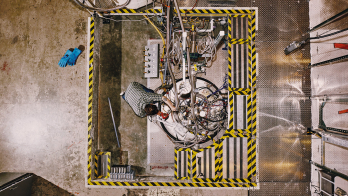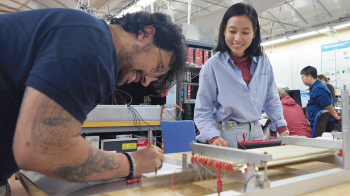After 10 years of hard work the last of the 42 modules for the LHCb Vertex Locator (VELO) arrived at CERN in early March. The VELO comprises two rows of 21 double-sided semi-circular silicon detectors, each about 8 cm in diameter. It was designed and constructed at Liverpool University and will be placed just 5 mm from the beam line.

The LHCb experiment will study B particles at the LHC to explore the imbalance between matter and antimatter, and the VELO is crucial. It will track particles spraying out of the forward regions of the detector, where the greatest numbers of b– b pairs are expected.
The VELO is unique in that it will act as both detector and beam pipe. Special bellows designed at NIKHEF will allow both sides of the VELO to retract to a safer distance of 3 cm away from the beam line while the beam is being set up. In addition, to maintain the LHC vacuum of 10–8 millibar, a special corrugated foil will separate the beam line from the VELO detector vacuum. By the summer the VELO team will finish assembly and prepare for installation in the pit.








